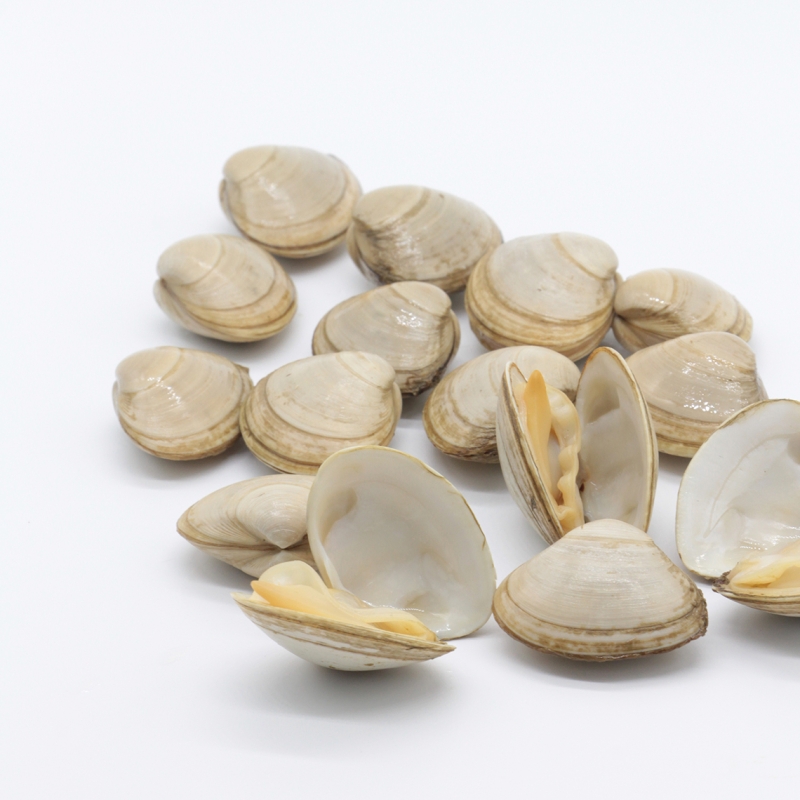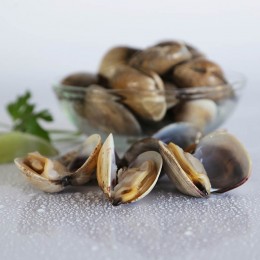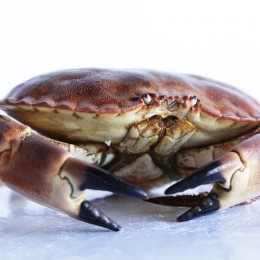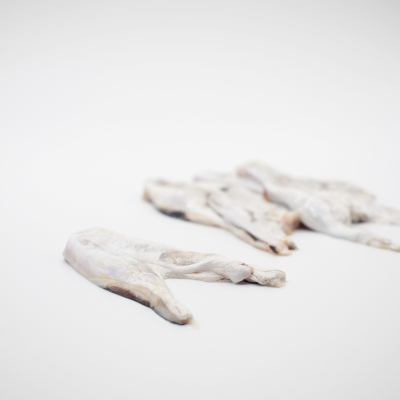The surf clam (Spisula solida) is one of the best known in Galicia, along with the pullet carpet shell clam, Japanese clam and banded carpet shell clam. It lives in salty waters, about 15–30 cm from the surface in sandy or muddy seabeds, where it hides and feeds on small living creatures by filtering water. All these varieties of clams have the same oval shape but vary in size and colour. Coming from the Ría de Arousa, it’s fished during October, November and December.
The surf clam is normally white, with some faint bands of a more intense hue and some fine lines on its shell, parallel to the edge. It can be differentiated from other clams by the siphons that run attached, along its entire length. It’s of a similar quality to the grooved carpet shell clam, but doesn’t survive as long out of water.
In addition to its delicious flavour, it stands out nutritionally for its high mineral (iron, potassium, selenium and calcium) and vitamin content (B vitamins, especially vitamin B12). It’s an excellent food for strengthening our immune system and boosting our defences. It’s also recommended for people suffering from anaemia.
Although the clams are already cleaned, it’s best to submerge them in cold salted water for an hour before cooking to open them up and release any sand trapped inside. Drain and wash them well. Then check that they’re all alive. If any of them have open valves, it means that they’re dead.
After this process, they can be cooked as desired. They can be steamed, made a la marinera, or feature in rice dishes, fish soups and stews. In any case, the cooking time should always be kept to a minimum, and if you decide to steam them, adding a bay leaf or two is a great idea.
Do not use force when opening any clams that are still closed after cooking.













